
The Old Jeffersonville Historic District is located in Jeffersonville, Indiana, United States. It marks the original boundaries of Jeffersonville, and is the heart of modern-day downtown Jeffersonville. It was placed on the National Register of Historic Places in 1983. The area is roughly bounded by Court Avenue at the North, Graham Street on the east, the Ohio River at the south, and Interstate 65 at the west. In total, the district has 203 acres (0.8 km2), 500 buildings, 6 structures, and 11 objects. Several banks are located in the historic buildings in the district. The now defunct Steamboat Days Festival, held on the second weekend in September, used to be held on Spring Street and the waterfront. Jeffersonville's largest fire wiped out a block in the historic district on January 11, 2004 which destroyed the original Horner's Novelty store.

Downtown Paterson is the main commercial district of Paterson, Passaic County, New Jersey, United States. The area is the oldest part of the city, along the banks of the Passaic River and its Great Falls. It is roughly bounded by Interstate 80, Garret Mountain Reservation, Route 19, Oliver Street, and Spruce Street on the south; the Passaic River, West Broadway, Cliff Street, North 3rd Street, Haledon Avenue, and the borough of Prospect Park on the west; and the Passaic River also to the north.

Quaker Square was a shopping and dining complex located in downtown Akron, Ohio which is now used by the University of Akron. Quaker Square was the original Quaker Oats factory; the complex consists of the former mill, factory, and silos. The buildings were bought in the early 1970s by developers who sought to create a unique, useful home for shops and restaurants. The buildings were bought by the University of Akron in 2007. The hotel has been converted to a residence hall. The retail space consisted of several small shops and restaurants, while offices were on the floors above. Quaker Square was open to the general public until September 18, 2015. The hotel no longer accepts reservations as the former hotel rooms and the entire complex is operated exclusively for student and university use. However, ballrooms are still available for catered events and conferences.
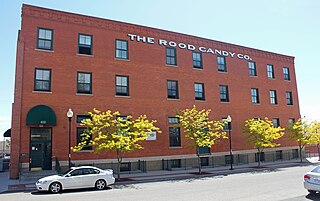
The Rood Candy Company Building is a historic manufacturing plant of the Rood Candy Company in Pueblo, Colorado, United States. It was built in 1909 and was listed on the National Register of Historic Places in 1984.
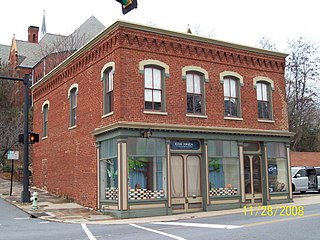
The Bragassa Toy Store is a historic commercial building located in Lynchburg, Virginia. In 1871, Francisco Bragassa purchased the property and in 1875 to 1876, he built the confectionery and toy store in Italianate style. The Bragassa store was at the center of a new, expanding commercial section of town during the Reconstruction period. It is the only surviving building within a four-block area that represents this commercial expansion. The building contains comfortable living quarters upstairs, with the merchandise on the ground floor. At the front of the shop were the first plate glass windows ever installed in Lynchburg. The store remained in the Bragassa family until 1987. In January 1988 the Lynchburg Historical Foundation purchased the building from the Bragassa family. In November 2008, the building was occupied by Kid's Haven: A Center for Grieving Children.

The J.H.C. Petersen's Sons' Store also known as the Petersen Harned-Von Maur Store Building and the Redstone Building, is a historic building in Davenport, Iowa, United States. It was individually listed on the Davenport Register of Historic Properties and on the National Register of Historic Places. In 2020 it was included as a contributing property in the Davenport Downtown Commercial Historic District. The former department store building was modeled on the Rookery Building in Chicago.

The Building at 202 W. Third Street, also known as the M.D. Petersen Estate Building, is a historic building located in downtown Davenport, Iowa, United States. It has been individually listed on the National Register of Historic Places since 1983. In 2020 it was included as a contributing property in the Davenport Downtown Commercial Historic District.
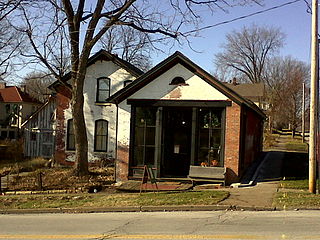
The Christian Jipp Home & Grocery is a historic building located in the Hamburg Historic District in Davenport, Iowa, United States. The district was added to the National Register of Historic Places in 1983. The house and grocery was individually listed on the Davenport Register of Historic Properties in 2005.

The Startup Candy Company is the oldest candy company in Utah and one of the oldest candy companies in the United States. William Startup started making candy in his basement in Manchester, England in 1820. He developed the first hard candy and called it “American Cough Candy” because he hoped to bring his new recipe to America one day. However, William died before making it to America, but he left his legacy to his son and namesake. William Startup Jr. learned the candy-making process as a young boy and continued to run his father’s candy business.

Wilton Candy Kitchen is a combination ice cream parlor, soda fountain and confectionery store located in Wilton, Iowa, United States. The two-story wood-frame building has a gable roof that is obstructed on the main facade by a false front. It retains its interior from 1922. The shop was founded in 1867, and it is considered to be the oldest continuing business of its type in the United States. The business was bought by Gus Nopoulos, a Greek immigrant who worked in his uncle's candy store in Davenport, Iowa before he bought this store in 1910 with Nick Parros. The building already contained the candy making equipment, a soda fountain, and other furnishings. In 1913 Nopoulos bought the building and bought out his partner. The tin ceiling was installed in 1915. He acquired the interior furnishings from the Elite Confectionery in Davenport and had them installed here in 1922. Gus Nopoulos continued to be involved with the shop until his death in 1983. His son George and daughter-in-law Thelma were also involved in the operation of the business.

The Milk Bottle Grocery, located at 2426 N. Classen Boulevard in Oklahoma City, Oklahoma, is a grocery building with a large metal Braum's milk bottle atop its roof. The store was constructed in 1930, and the milk bottle was added in 1948. The bottle was designed to draw attention to the store, as the tall bottle would be visible to automobile traffic along Classen Boulevard, which was part of U.S. Route 66 at the time; it also served as an advertisement for the dairy industry. The store is also one of the few triangular buildings in Oklahoma City, as it occupies a corner lot in an area where Classen Boulevard cuts diagonally through the city's street grid. Due to its shape, the store was known as the Triangle Grocery from 1940 until 1948, when it became the Milk Bottle Grocery due to its new statue.

The Giles J. Gibbs Building, also known as the Sugar Bowl, is a commercial building located at 12 North Clinton Avenue in St. Johns, Michigan. It was listed on the National Register of Historic Places in 2000.

Shane Confectionery is an American candy shop and candy producer, located at 110 Market Street in Philadelphia, Pennsylvania. Currently owned by Ryan and Eric Berley, it is considered the longest-running confectionery business in the United States. The original confectionery business at the location opened in 1863. They are known for making traditional specialties including previous owner Edward Shane's buttercream chocolates and Pennsylvania clear toy candy.

The Cattle Bank is a historic bank building located at 102 E. University Ave. in Champaign, Illinois. Built in 1858, it is the oldest documented commercial structure in Champaign. It opened as a branch of the Grand Prairie Bank of Urbana, Illinois. Champaign was the southern terminus of a railroad line to Chicago, so cattle raisers from the surrounding area drove their cattle to Champaign to ship them to the Chicago market. The Cattle Bank provided banking and loan services to these cattlemen. The building housed a bank for only three years. During that time, U.S. President Abraham Lincoln is known to have cashed a check there. From 1861 to 1971, the building housed several commercial tenants. It was added to the National Register of Historic Places in 1975 and renovated in 1983. Since 2001, the Cattle Bank has been home to the Champaign County History Museum.

The Burnham Athenaeum, also known as the Champaign Public Library, is a historic library building located at 306 W. Church St. in Champaign, Illinois. Built in 1896 through a donation from Albert C. Burnham, the building was Champaign's first permanent library. Architect Julius A. Schweinfurth designed the Classical Revival building. The two-story building is built from cream-colored brick with terra cotta ornamentation. The front entrance features four two-story Ionic columns supporting a pediment and an inscribed frieze. A terra cotta band encircles the building below the second-story window sill line. The Champaign Public Library occupied the building until 1978, when it moved to a larger facility.
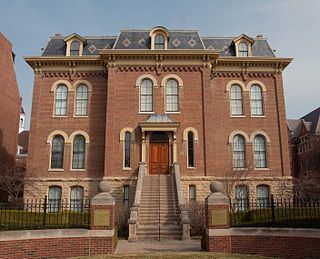
Harker Hall, also known as the Chemical Laboratory, is a historic building on the campus of the University of Illinois at Urbana–Champaign in Urbana, Illinois. Built in 1877, the building originally served as the university's chemical laboratory. Architect Nathan Clifford Ricker designed the Second Empire building, which originally featured a mansard roof. In 1896, a lightning strike set the roof on fire, and architect James White replaced it with a hip roof. The building was named Harker Hall in honor of Oliver A. Harker, who served as dean of the university's law school from 1903 to 1916. Until it stopped hosting classes, the hall was the oldest classroom building at the university.

The Natural History Building is a historic building on the campus of the University of Illinois at Urbana–Champaign in Urbana, Illinois. Built in 1892, the building originally housed the university's departments of botany, zoology, and geology. In addition to classroom space, the building also included a natural history museum. Architect Nathan Clifford Ricker designed the High Victorian Gothic building. The red brick building has a rough stone foundation and is decorated with colored brick and stone. The steep roof is supported by a timber truss system; the exposed trusses create a coffered ceiling on the interior.

Mount Vernon Triangle is a neighborhood and community improvement district in the northwest quadrant of Washington, D.C. Originally a working-class neighborhood established in the 19th century, present-day Mount Vernon Triangle experienced a decline in the mid-20th century as it transitioned from residential to commercial and industrial use. The neighborhood has undergone significant and rapid redevelopment in the 21st century. It now consists mostly of high-rise condominium, apartment and office buildings. Several historic buildings in the neighborhood have been preserved and are listed on the National Register of Historic Places. Mount Vernon Triangle is now considered a good example of urban planning and a walkable neighborhood.
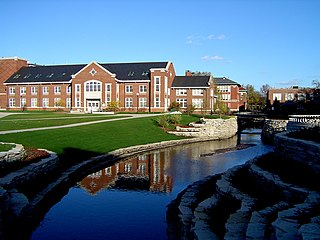
The Metal Shop, also known as Aeronautical Lab B, was a historic building located at 1022 South Burrill Avenue on the campus of the University of Illinois at Urbana–Champaign. Built in 1895, the building served as a metal shop for the university's architecture and engineering students. Nathan Clifford Ricker, who later served as Dean of the College of Engineering, designed the building. The design was more functional than Ricker's other work on the campus; its only decorative element is a brick arched loggia in front of the entrance.





















